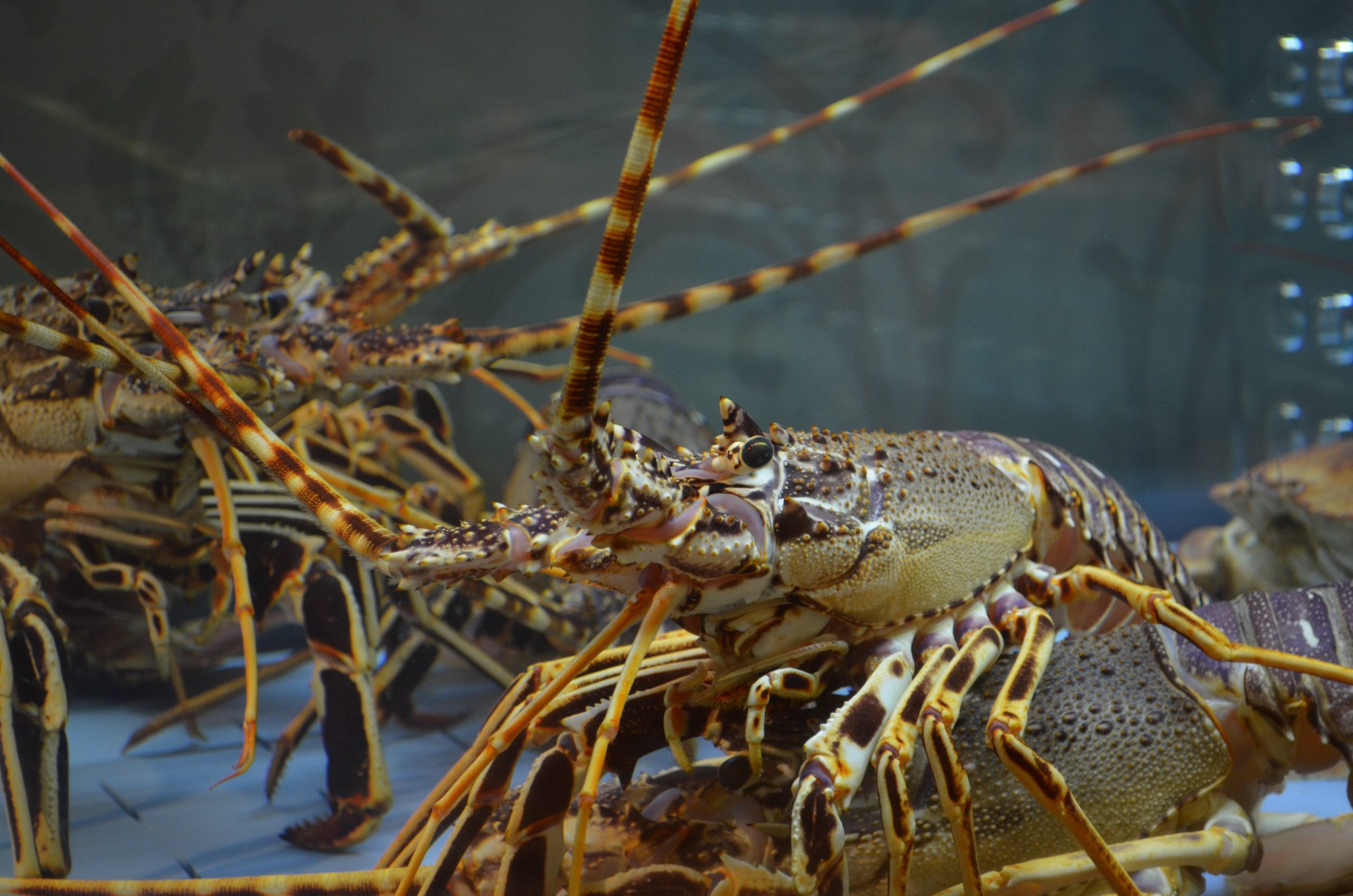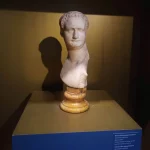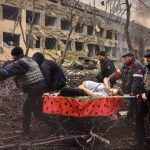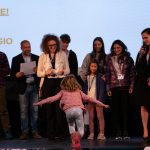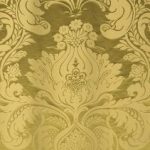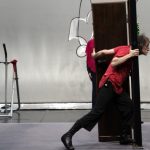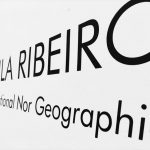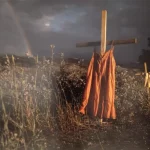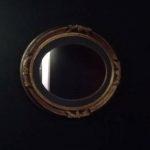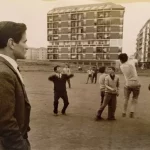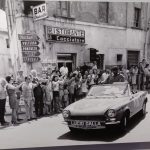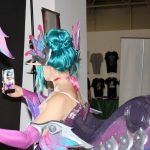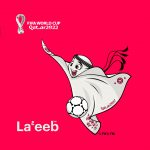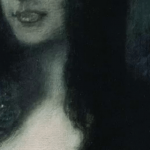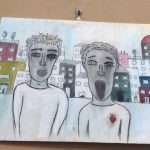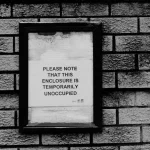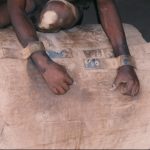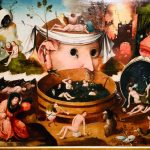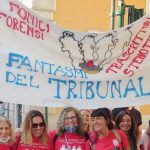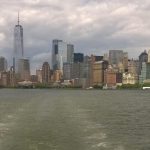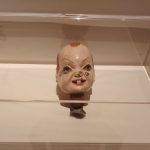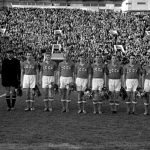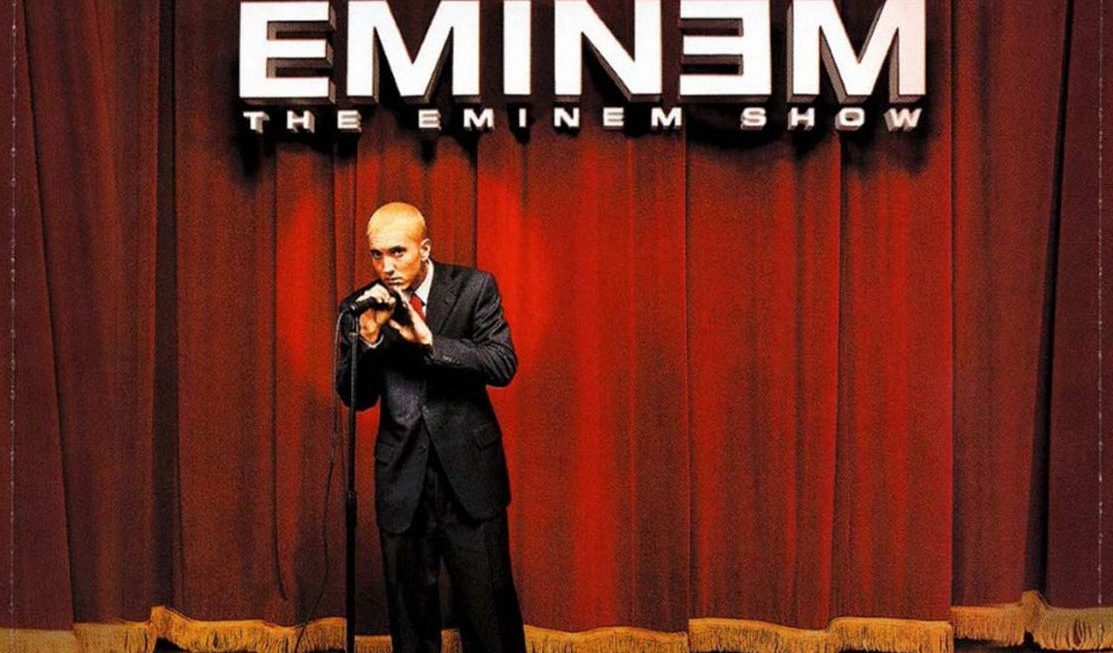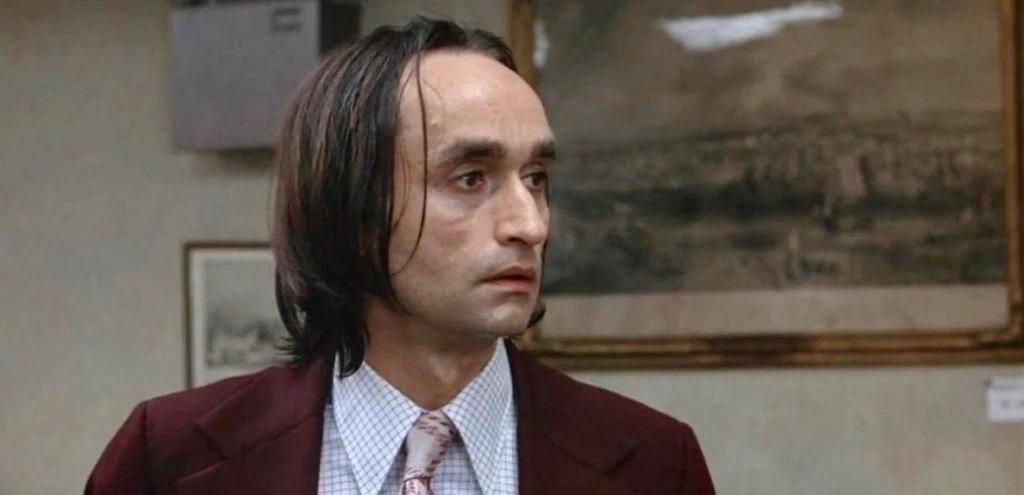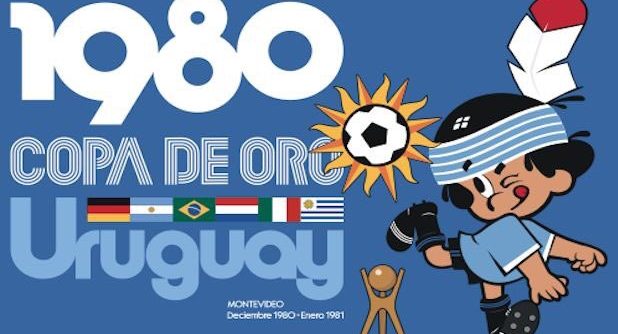Nihil difficile volenti, “nothing is difficult for those who desire it” The Latin motto becomes a warning for the Maam – Museum of the Other and the Elsewhere of Metropoliz – and its residents in the city of Roma.
The writing, reproduced by the artist Pasquale Altieri , refers to the fact that you can even go into space and return with the Moon (original title : L.U.N.A.) , which has been ideally set by Massimo De Giovanni in between ceiling beams of the courtyard. It suggests that you can improve the Babel Tower project , because this time the mixture of languages and cultures did not generate chaos but really approached a little more to a God.
Obviously you cannot fully understand the context and the situation of this unique place, where art saves space and space saves art , without knowing its history. In March 2009 the former building of the salami factory Fiorucci located on 913 Prenestina street , in Rome’s eastern suburbs , is occupied with a dual purpose : solving housing problems for many people on one side and for a demonstrative act against a giant construction property owner, the Salini Srl, on the other side.
First there were living animals. The pigs entered in a corridor that got narrower and narrower, at the end of it they were stunned with an iron point gun and hung by their hind legs on a conveyor and then proceeded to the next room for slaughtering. Once the blood had been poured , the carcasses passed through the flay machine, which looked like a car wash with a lot of whirling spatulas until their evisceration .
Now, on the wall just in front you can see the Cappella Porcina fresco – eMAAMcipazione, Pablo Mesa Chapel and Gonzalo Orquìn’s work, which revisits the path of the pigs in the factory, by reversing it from death to life. In the adjacent room, which housed tanks for collecting blood , the works of Nicola Alessandrini and Vincenzo Pennacchi recall what these walls have actually seen for years .

Rome had already experienced the suggestion to put art in a place of death with the Macro of the former slaughterhouse in Testaccio (another Rome neighborhood) , that for decades had fed meat to the people. But putting ” life ” inside a museum and vice versa , as Maam is doing in Tor Sapienza area, is something that nobody did before . The Macro, like all museums, corresponds to the definition : ” acquires , orders , catalogues , preserves, communicates and exhibits culture , science and technology .” It has specific visiting hours, you usually have to pay a ticket , and the works are closed and protected, so in fact it requires and encourages a certain detachment between those who create and those who observe , between the artist and the viewer .
What happens if instead : people settled in a former salami factory because they need a home and then some artists come willing to tell and give value to this action ? Over time, the spirit of art widens to involve everyone, residents and visitors , fueling the belief that it can be the key to saving everything.
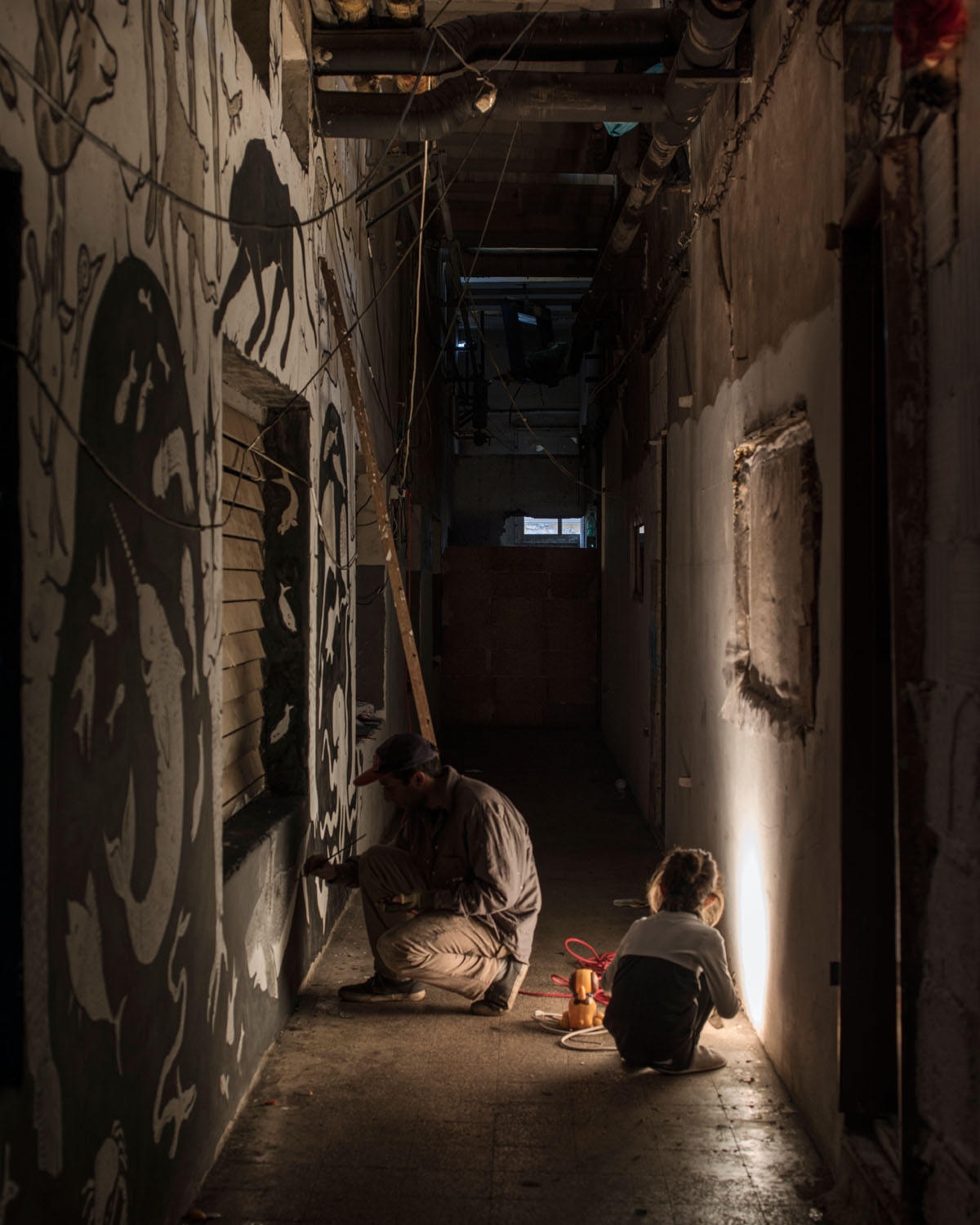
We are almost close to the ” Sacred Gra ” . In front of the imposing facade , painted by Borondo and Kobra, with the glittering Malala looking at you , you think how strange it is to hear of such a place from a fellow photographer who lives in Paris, from some Greek friends who already did a concert there two years ago and that are still excited about it: it is strange that the Maam is not on everyone’s lips in its own city but attracts artists from around the world .
We said that it was March 2009 when, thanks to the contribution of the dei Blocchi Precari Metropolitani (BPM ) – a Roman organization established in 2007 to claim the right to housing – the Metropoliz was born . And this is already a first peculiarity, given that usually occupations take place in schools , offices, or other houses left in a state of neglect . So much so that , in addition to the usual problems related to the connection of electricity, water and gas , the remarkable extent of 20 thousand square meters – took away time devoted to mapping , so that it was clear how and where to obtain housing for the 200 some people involved , sixty families with many children : Italian with Peruvians or Romanians , Ukrainians , Moroccans , however, people united by something , without resources and aid from the state, which were driven by BPM initiative.
The second feature was the inclusion of the Roma community in the struggle for the house . “Under threat of eviction the group from the camp located in Centocelle was intrigued by our experiment in self-management ,” says Irene of BPM , “and did not want to end up in another organized camp. Together with us, during the protests , they have made their voices heard for the first time in these terms . “A community that has always been accustomed to their own rules started to deal with a more complex reality, accepting compromise in order to grow. For example, they “did not conceive the closing of the entrance gate ,” says Irene ,” which was a defense against raids by police and right-wing groups “on one side and against the other would-be occupants on the other side, not out of malice but because “you cannot increase infinite number of inhabitants maintaining a decent lifestyle . ”
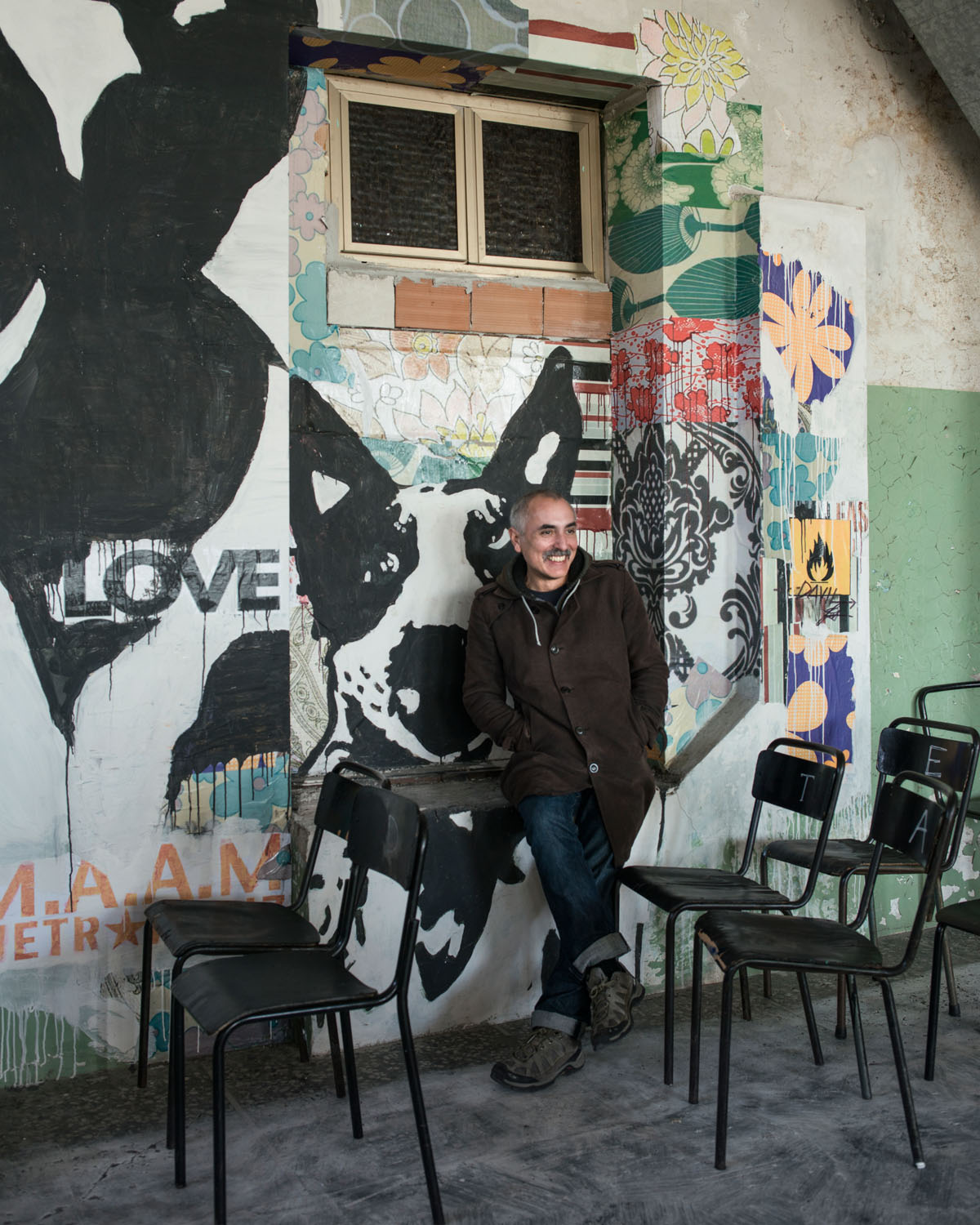
But so far all this may seem like a normal history of occupations , although with variable Roma . As long as Giorgio De Finis , anthropologist , artist and filmmaker , accompanied by fellow film maker Fabrizio Boni knocked at the gate of this mestizo city. It is 2012 and the first project concerns the production of the documentary Space Metropoliz – whose latest episodes have been put online recently – “to give voice to the dream ,” says George, “by playing on the impossible . The inability to have a house and ask for the moon ,since they are both impossible … ”
Their film involved the first street artists who painted the first walls for preparing the set. Starting from the work of Lukamaleonte , which stands on tables (also of the same author) in a large kitchen , which speaks about the alien / immigrant , to the little man by Hogre who climbs the tower to the moon where the (almost) true Gian Maria Tosatti’s telescope is pointed. But also many other internal and less visible works , but recognizable for being inspired by space in the most galactic sense of the word.
Even the inhabitants, together with Francesco Careri Stalker / Osservatorio nomade , began to get involved in the game of art, contributing to the construction of the rocket, the essential means and symbol of the conquest of the impossible. After about six months, a huge float was pulled off of one of three outdoor pools using a crane. It was used for the base : “many began to doubt that our adventure could come to fruition, but this was intended to declare that we would not have given up so easily,” says Boni in the film. There was still much to do , “we had to overcome the ambiguity of certain projects , in places like that, if you do not change their lives for real, they get disappointed ,” says George. A new metamorphosis starts.

The artists follow one another , their signs enrich the space while life , always a little ‘ less precarious, go ahead . Maam borns from the Space Metropoliz, the Museum of the Other and of the Elsewhere , where « Other » means the ” mestizo city ” , as the inhabitants call it, constantly evolving , and where « Elsewhere » means the intention to “continue to maintain diversity because it is a worthy value , “says the now artistic director of this enormous ” cathedral of secular art” Giorgio De Finis .
So it happens that people find a mirror in artists – “everyone with his or her aesthetics does not forget to be the other ” – and vice versa – ” it is not a collective but a collective work : the art is individual , but the project is one and only”. It is also unique in its kind : the Maam is a museum that is unique in the world and cannot fall within the definition of the International Council of Museums because it is pure relationship , a place where ordinary life and art coexist and actually meet. It is a ” real museum “, as the artist Cesare Petroiusti refers to it . Here we do not catalogue and we do not require order and composure , it is only remembered that “the game of art is very serious .”
“I tried to make it clear that everyone can play at art because they are all are users ,” says Giorgio, ” but also that being an artist is a profession .” And the game work. Compared to Metropoliz the “we ” intended as a closed group fell, because ” we were interested in opening the door and in avoiding the isolation from enclave which is necessary for political defense . Today thousands of visitors arrive. ” The key is the content itself , the project . ” If the Maam was left to itself it would not make sense. Artists wouldn’t come. It’s a trap in a positive way. ”
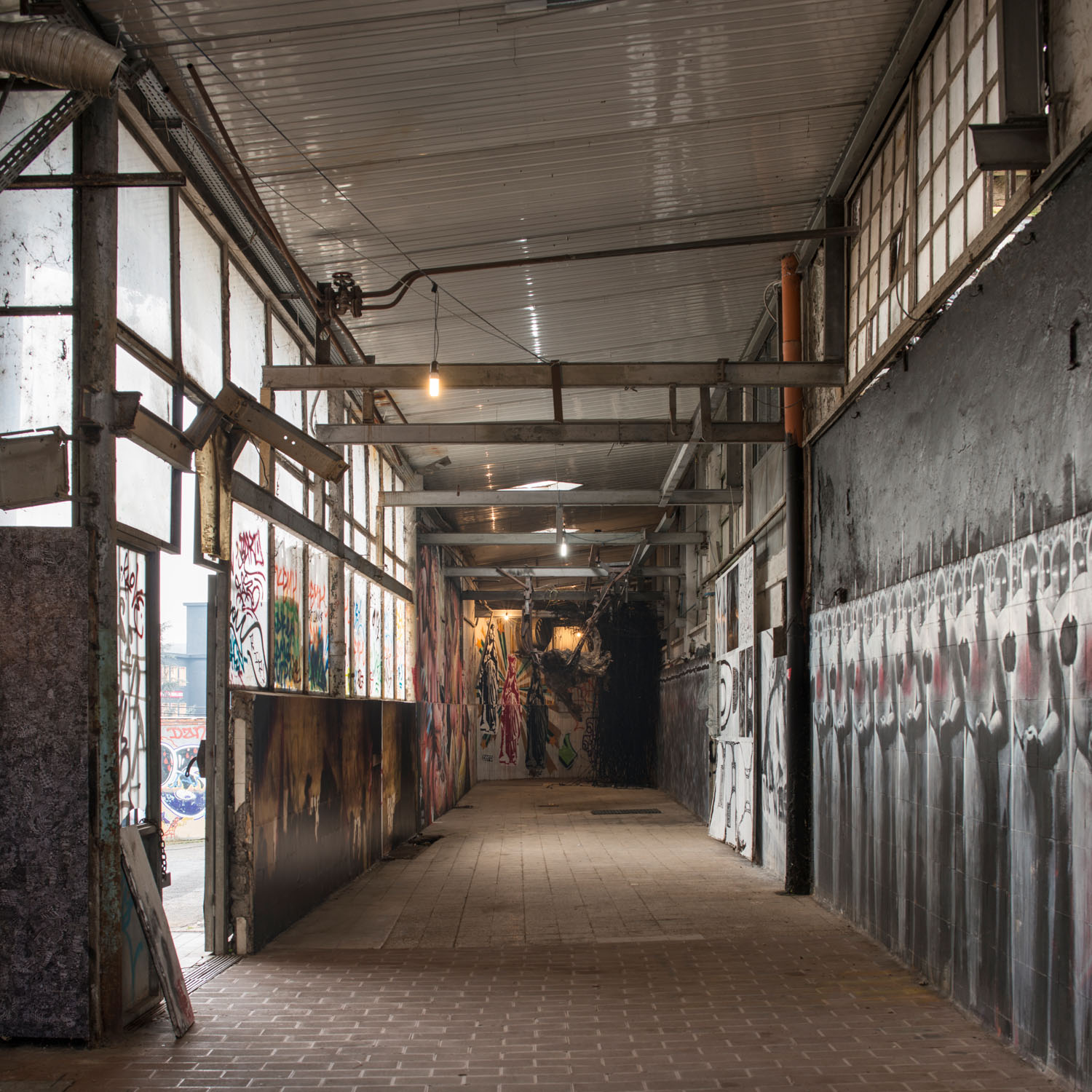
Art becomes a Trojan horse , a shell that sends itself to protect in a concrete and symbolic way, according to Stefania Fabrizi’s Warriors of Light (original title : Guerrieri della luce), which stands compact and majestic behind the front door . Real metropoliz barricades found in Maam ideals barricades against police and bulldozers. “This is why when George arrived with the proposal it seemed immediately interesting ,” recalls Irene . ” Inhabitants and artists are different worlds that meet ,” adds George, ” but no one wanted to do another identical museum , art is applied to multiple visions; artists are here for the right to exist .”
Another protection is given to children , along with new opportunities : to live inside art opens their minds. “During art workshops we try to make them understand that art is a journey,” as it is required to understand each other and live together , ” every artist has a way of expressing themselves and that , for example , suggests to children that there are different perspectives that put all together bring wealth. ”
Not surprisingly, the toy library, a place to play and study , was the first space renovated completely. ” First, we decided to settle this room ,” says Giorgio who is sitting aside benches of children , here the non-profit organization Popica has found a comfortable space to teach Italian. The artists have repaired the roof first and then realized their works in any space, as the great powder blue blob which drips color realized by the artist Veronica Montanino who had never realized street art works . But Maam inspires this too.

” Mine was the first intervention ever, there were only the wrecks of the shipyard-cinema and I did not understand what was the Maam . They told me they wanted for the toy library a valuable work ‘ like what you do for galleries ‘ . The first meeting was with the children , before the wall I painted them because my work is dedicated to them , the most receptive part of Maam . Then I realized that this is an experiment of contamination not only artistic but also anthropological and political , that will help to understand the differences between a Roma who lives in the area and the one who lives in the art , for example . Then I instinctively thought of a blob that glides without a center taking space in an uncontrolled manner . The Maam is like a prophecy that brings inspiration to all : to the artists who watch other artists at work , every sign responds to the sign . ” To say nothing of those who experience work together , like Giovanna – Gio – Pistone and Alessandrini or Franco lo Svizzero (who closed himself for working in the ” room of the cathedral ” for 11 days ) and Montanino herself .
“The first form of art is to live in here ,” said Irene of BPM , in a device of the future and piece of industrial archeology at the same time which already boasts three artistic periods . The pre – Space one, when philosophers , physicists and astronomers were invited to talk about this impossible trip ; the Space Metropoliz period , lasted the time of making the film that documents the “Space”, by many considered impossible to live and who finally becomes accessible ; the current post- Space period, with new works to be submitted every quarter, with the feasts of the solstice and equinox , according to the moon cycle . Artists call other artists . All help the people in their adventure and vice versa
The families are divided between buildings and tenements within the city , between ” Piazza Perù ” (Peru square), where the South Americans reside in very decent homes , and the ” Corridor of the Roma “, where overlook the doors of small apartments , that were probably offices before . Now the Guerrilla Spam , who had already marked the kitchen with an Original Sin , are now painting a mural that pays homage to the diversity , as ” realized Babel Tower ,” says one of them , Andrea Guerrilla , while a little girl joins him starting to draw on the wall , ” each floor is dedicated to a country and the tower is in the middle between land and sea , sky and space.” It will be finished in January and it will be less “violent ” of their usual ” is like a fresco of a church , suitable for those who live here , especially for children . We say to the artists to try the experience of creating even ‘ above ‘ , where people live, you have to put yourself in a different perspective . ” A woman offers him tea and we continue our tour.

At the beginning of the occupation there were so many tags and only a mural in the hall of the drainage basins, which represented small orange whales into the water . It is the work number 0 of the Roman artist Hitnes , who did not know that since then inside that factory it would appear tens of those: today we speak of nearly 400 works that have transformed a ” white box ” in a house – museum city that contains a ferment of life that cannot be described . In the midst of this dilapidated giant, which already boasts walls from 150 thousand euro , run a lot of children . They play on their own or they collaborate to works .
Some of them were impressed by the work of the Collettiva Geologika where they transformed a wall of the hall where the fireplace lay. With their little hands were made to shape the earth and straw for what the artists envision as a future Hall of the city council . Earth – with ” transformer fire ” Mauro Magni that wraps the walls in front – ” because the matter is female , nature is political and the construction yard is our scene.”
Thus children learn to respect the works : ” we try to explain to him that , even if it is a job that can be done in just a few days , the art belongs to everyone ,” says George. The important thing is not to recreate a ” favela effect ” : the roles must be respected first and foremost in order to protect the space occupied and to maintain the value of the place, ” the recognition of those who work here with experience behind.” Otherwise you banalize everything. ” We saw something disappear, but it was just a few flowers or beads that you put in your hair ,” jokes Michela , an architecture student , who works as a handyman here .

At the start of cohabitation we used to discuss very often,” everyone wanted to know everything, now, since every work is like a piece of a mosaic , even if you do not feel a piece as yours, you can accept it as a bit of diversity in the collective work,” says Giorgio . In the post -space white box is gone, Maam is different from other museums because” you have to insert yourself, hook yourself, get influenced, dialogue between each artist is very strong , so that the works are mixed and contaminate each other’s in so far as you wonder if they are works or not, the size can be huge or tiny , and there are no labels because you want to keep the ambiguity of complexity ” . An Important concept : ” because in life nothing is simple .” So the weekly meetings, the heart of decision-making process, have been restricted to residents who are directly affected and who, depending on their personality, are more or less active in the community.
One of them is Mustafa , coordinator of practical activities , he manages refreshments upon arrival of materials . He comes from Morocco where he goes back often because of ties to a Berber movement that reproduces the pattern of Maam in the Maghreb . ” There are several royal palaces abandoned in Marrakech . We create work and collective management of finances that drive many Moroccans to return home . ” The principle of co-existence is self- sustaining , says Sara , of Peruvian origin , ” without wasting resources outside we maximum their use here . In every corner there is the heart of all, we want to stay because we feel free in our city mestizo, enjoying a normal life “, a concept repeated by many voices .
Metropolitan blocks, migrants , children , Roma, artists, worlds that might be light years away, they have found a balance here unexpectedly. In the same neighborhood , Tor Sapienza , last November the atmosphere was heavy for the anger of citizens resulted in guerrilla actions in front of Cara (Reception Center for Refugees and Asylum Seekers ) Viale Morandi , with his guests accused of vandalism and petty crime. A kilometer away, the situation is the opposite .
” We do not want to knock down a piece of history that has employed hundreds of residents of Tor Sapienza ,” says Irene of BPM , ” we are aware that the territory is a resource . in the Cara we park people waiting for documents , which therefore cannot work and relate with those who have faced challenges. Knowledge is essential to overcome prejudice . ” Sara on the same line : ” we are sorry for what happened to the Cara, but we have never been afraid of what would happen to us . In the district they know who we are , what we do , what our struggles are. ”

At the last party, that of the winter solstice celebrating the concomitant Rebirth day thought by the artist Michelangelo Pistoletto ( 21:12:14 ) , the Maam seemed alive. Going around the space it took shape by the minute, it crowded with busy people in various ways, including children intent to hide, performing artists creating a pleasant moment, people in the kitchen, others at the table, photographers, clothes hanging, pieces of artwork at home, cameramen , musicians, curious. In the morning a guided tour took you in the future ( 3014 ) already present and even a little ‘ past, where in every corner a piece itinerant Orchestra di Piazza Vittorio (a local orchestra)sounded arches while the sweet voice of a soprano sung.
It is lunchtime, the kitchen is starting to fill up with people under hunting trophies, harmless version, soft as plush , pop opera by Francesco Melone . To deal with the food there is Sara , who describes the dishes and provides recommendations. That mixture of rice, chicken , cassava and cabbage , takes you halfway between South America and North Africa , she says that “the dishes mestizos increase the involvement ” . Lucica instead is to drink and if you ask her how to live together in Metropoliz , you said that ” for the Roma community is the same .” ” It’s nice to learn the traditions of others, argue too, but that’s what happens in all families.” At first the idea of living in a museum had seemed strange , ” I thought that no one would ever come! ” . Less enthusiastic is the daughter, who like many of her peers, find museums unamusing, ” doesn’t like studying history ,” says amused Lucica .
In the afternoon hours of other performances , such as Portrait # 1 of the Australian collective Illimine ” a portrait in words ” created in eight hours of work a day for three days in a row , ” a poem impromptu ” that transforms a transparent sheet in a pile of written words, spoken and reworked into sound, which will stand out more, ” leaving only the abstract and incomprehensible.” Irene tells us that among the people wanders also the director of a Paris museum that has suggested that for her this is normal.
It is normal to occupy a place for making art. Shortly after we hear the pops, from the roof we can overlook the courtyard, the one of the Moon (original title L.U.N.A.) wedged between the rafters, and we see some children . But with a closer look, we see also the extravagant artist (and octogenarian), Paolo Buggiani, playing with them before setting fire (and water) to his boat with clouds.

They are considered legitimate from the outside world but not from an institutional point of view, even if for a short period the previous City Council had regularized the housing situation of the residents, only to discover that the current administration has changed the cards on the table, ” many were no longer noticed when they went to the Revenue, “says Carlo Gori , artist and leader of Maam every Saturday .
So you start each day knowing that it could be the last in the former factory Fiorucci, that the bulldozers can intervene to restore to Srl Salini his property. That day is today, tomorrow, in a year or one never knows.
“We have no specific pressures from Roma Capital City, but when occupying there’s always a risk”, says Michela, who here is planning to enrich the “Piazza del Campidoglio” (Campidoglio Square) at the entrance of the city mestizo – with reason pavement that draws the square of the Rome town hall- with a series of benches and chairs , another stimulus for sociability. Especially like the contribution to the realization of a carpentry workshop that would give work another gear facticity within the factory .
Meanwhile we continue regular life, always knowing, to put it as Giorgio does, ” that even under eviction we will have new friends from all those who have come here and have grasped the value of our experiment.” Nihil difficile volenti, even playing on the impossible. ” With the inability to have a house and ask for the moon, since they are both impossible … better off to opt for the Moon”.
Articolo di Alice Rinaldi + Gabriele Santoro
Foto di Giuliano Ottaviani
Traduzione di Maura Fenotti + Morgan Hull-Brousmiche
Other photos in the italian version (here) and in the gallery below
